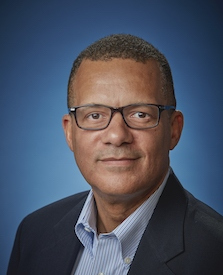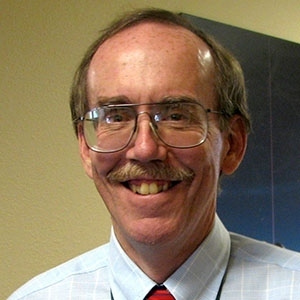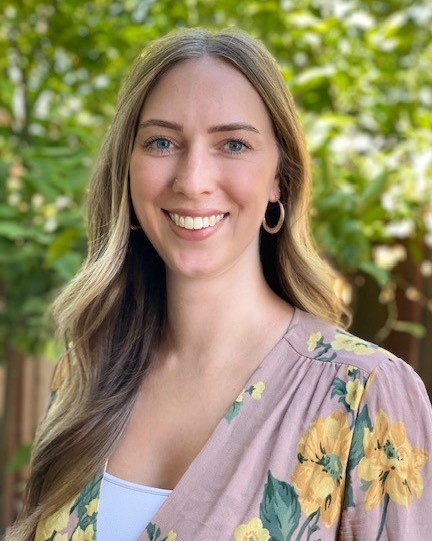Physics
Driving research at the forefront of physics to address national security challenges
LLNL’s theoretical and experimental physics research areas are tightly coordinated to provide predictive, validated, and comprehensive solutions for national security challenges.
LLNL’s Physics Division (Physics) use the state-of-the-art tools and unique resources at LLNL to conduct leading-edge research and development activities with broad applications in foundational science, stewardship science, fusion energy, advanced optical systems, and data science. We drive research at the forefront of physics by:
- Determining fundamental properties of matter under extreme conditions through experiments as well as modeling and simulation using exascale computing resources.
- Harnessing the power of quantum physics to develop quantum-coherent devices, quantum materials, quantum systems, and quantum–classical interfaces.
- Developing new capabilities in space science and security, including space-based observations of Earth and small-satellite technology.
Within Physics, our collaborative research and development teams focus on condensed-matter physics, plasma science, high-pressure physics, and laser physics. Our scientists support the National Ignition Facility, the Jupiter Laser Facility, the High Energy Density Science Center, and the Space Science Institute, as well as programs in energy and national security.
Explore this page to learn more about the people, research, and resources that support our mission.
People
Research Areas
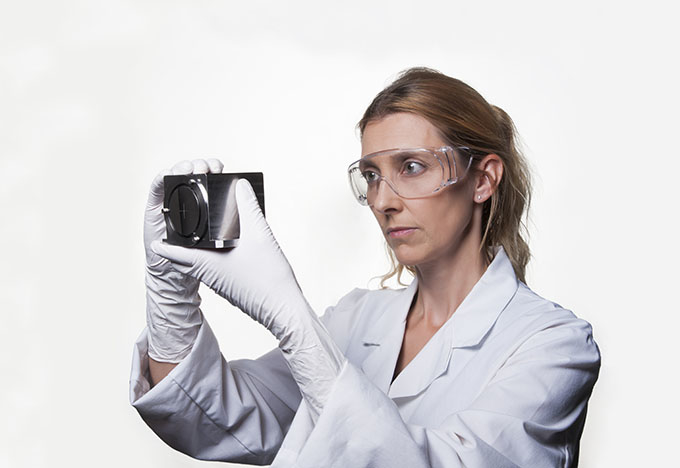
Applied Physics
Associate Division Leader: Stefan Hau-Riege
Our scientists and engineers push the boundaries of photon sciences and space technology to meet needs in nuclear security, space security, and basic and applied science. Our instrumentation and analysis techniques help establish new approaches for space situational awareness and space-based Earth observations.
Our work on visual to x-ray instrumentation as well as laboratory astrophysics plays an important role in telescope and satellite missions and astrophysical investigations. In addition, we pioneer and refine x-ray optics to understand photon–matter interactions and support high-energy-density physics efforts at National Nuclear Security Administration facilities, while exploring novel uses of multilayer optics for gamma-ray spectroscopy and thermal-neutron imaging.
Our researchers have participated in notable projects, including:
- The Gemini Planet Imager
- The Large Synoptic Survey Telescope
- The National Reconnaissance Office’s CubeSat−Next Generation Bus program
- NASA’s Solar Dynamics Observatory and NuSTAR satellites
Our researchers comprise groups that perform basic and applied research to support science and security missions both at the Laboratory and for external sponsors. Learn more about these research groups by expanding the sections below.
Group leader: Michael Schneider
The Astronomy & Astrophysics Analytics group conducts research in cosmology, exoplanets, and the solar system. We use analysis techniques that include applying image processing and inference algorithms, such as Bayesian statistical methods and machine learning, to ground- and space-based optical telescope images and simulations. We seek to understand the nature of dark energy and dark matter through mechanisms such as weak gravitational lensing of galaxies or investigating Massive Astrophysical Compact Halo Objects (MACHOs) in the Milky Way. In addition to cosmology research, our group uses detection and orbit determination techniques to investigate Earth Trojan asteroids and explores adaptive optics capabilities and their applications for exoplanet discovery.
Our group plays a central role in the Rubin Observatory Legacy Survey of Space Time (LSST) data processing pipeline, and our members include working group leaders in the LSST Dark Energy Science Collaboration (DESC). We are also active in several other astronomy survey collaborations including the Zwicky Transient Facility (ZTF), the Hyper Suprime-Cam (HSC) survey, and the Dark Energy Spectroscopic Instrument (DESI) survey.
Beyond science research within PLS, our group supports a number of programs within the Global Security and National Ignition Facility directorates through efforts such as cataloging and interpreting Earth-orbiting satellites and debris, in pursuance of increasing our nation’s space situational awareness.
Group leader: Greg Brown
Our scientists study a wide range of topics, including atomic physics, x-ray astrophysics, nuclear physics, and solar and planetary physics. We design a wide range of diagnostic instrumentation and operate the original electron beam ion trap. Several international facilities, such as the National Spherical Torus Experiment Upgrade (NSTX-U), Alcator C-Mod, DIII-D, and the Orion laser, use our instruments to study and diagnose fusion- and laser-produced plasmas. Our group members take on leadership and research roles in experiments at these facilities as well as LLNL’s National Ignition Facility and Sandia National Laboratory’s Z machine.
Our vibrant laboratory astrophysics program supports a variety of astrophysics and solar physics missions:
- Chandra
- XMM-Newton
- Suzaku
- Hitomi
- The X-ray Astrophysics Recovery Mission (XARM)
- ATHENA
- Hinode
- The Solar Dynamics Observatory
Group leader: Marie-Anne Descalle
Our group develops advanced x-ray optics solutions and explores photon–matter interaction processes for basic science investigations and programmatic missions. We push the limits of x-ray optics by utilizing our unique cross-disciplinary expertise in optics design, optimization, and fabrication to:
- Build wave-front-preserving static and actuated beamline optics to transport and focus intense beams fabricated utilizing leading-edge thin-film coatings and multilayers.
- Develop, field, and interpret novel diagnostics based on reflective x-ray optics for inertial confinement fusion and stockpile stewardship.
- Explore novel uses of multilayer optics for gamma-ray spectroscopy or thermal-neutron imaging for nuclear security applications.
- Develop next-generation x-ray telescopes for astrophysics and solar astronomy applications.
- Perform high-intensity x-ray–plasma interaction studies for code validation for LLNL’s Strategic Deterrence directorate.
Group leader: Wim De Vries
Our activities span astrophysical science research to focused national security programs in space situational awareness, space protection, and intelligence, surveillance, and reconnaissance. We support programmatic efforts in LLNL’s Global Security, Strategic Deterrence, and NIF and Photon Science organizations, and we execute science-based research and development within PLS.
Our projects include:
- The development of x-ray adaptive optics systems
- The Gemini Planet Imager instrument for the Gemini South Telescope
- Optical payloads for nano-satellites
Additionally, we have explored the use of survey telescopes for dark matter research, developed algorithms and software tools for simulation of orbital space events, and implemented sensor calibration and exploitation strategies for hyperspectral airborne sensors.
Group leader: Stefan Hau-Riege (Acting)
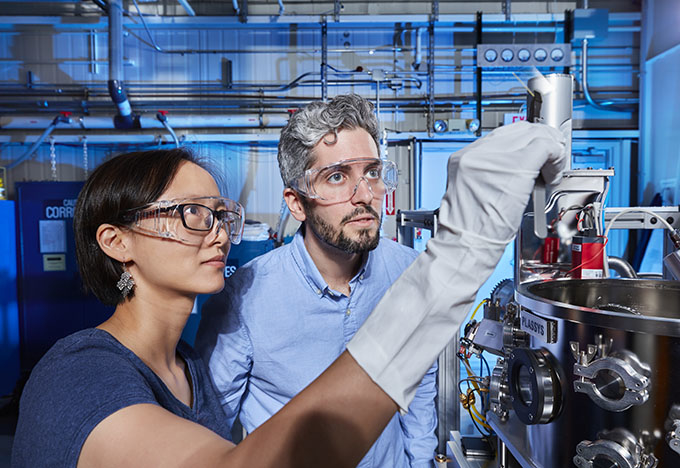
Condensed Matter
Associate Division Leader: Phil Sterne
We conduct forefront research in condensed matter physics, science, and technology in support of LLNL missions. Our portfolio addresses national security, high-energy-density science, equations-of-state and constitutive properties, basic science, and advanced technology.
Among our key capabilities are modern experimental platforms, high-performance computing, and advanced theoretical methods. We study high-pressure states and dynamics of matter at the Advanced Photon Source. We implement new algorithms and approaches on supercomputers to model and simulate the behavior of matter under extreme conditions. Using tightly coordinated theory, experiments, and simulations, we explore comprehensive predictive understandings of the physics of matter under a broad range of conditions.
From materials theory to phase-transition kinetics, our scientists pursue forward-looking research studies to anticipate future challenges. Learn more about our research groups by expanding the sections below.
Group leader: John Klepeis
We research theoretical and computational condensed-matter physics in support of major Department of Energy and LLNL programs. Our research emphasizes quantum mechanical modeling and simulation of materials properties over wide ranges of temperature and pressure, focusing on understanding and elaborating the structural and thermodynamic properties of metals.
To learn more about our research, methods, and staff, visit the EOS and Materials Theory Group page.
Group leader: Phil Sterne (Acting)
We develop and implement new tools for EOS and related applications. Our work spans from quantum electronic structure code development to the libleos application program interface and associated tools. Our goal is to emphasize the importance of longer-term capability development for EOS-related activities.
Group leader: Jason Jeffries
Our group conducts static and dynamic experimental research addressing scientific challenges in condensed matter under extreme compression and thermal conditions. We conduct high fidelity studies of the physical, thermodynamic, and constitutive properties of matter and the associated dynamics and kinetics of phase transitions. Our experimental studies vitally affect and are closely aligned to the National Nuclear Security Administration’s stockpile stewardship mission.
To learn more about our research, methods, and staff, visit the High Pressure Physics Group website.
Group leader: Yaniv Rosen
Our group is focused on development of hardware, algorithms, and control for near-term applications in quantum information, sensing, and computing. Overarching goals are to draw from and build a community around intersections in applied mathematics, computer science, quantum information, and device physics to make optimal use of near-term quantum hardware.
To learn more about our research and facilities, visit the Quantum Coherent Device Physics Group page.
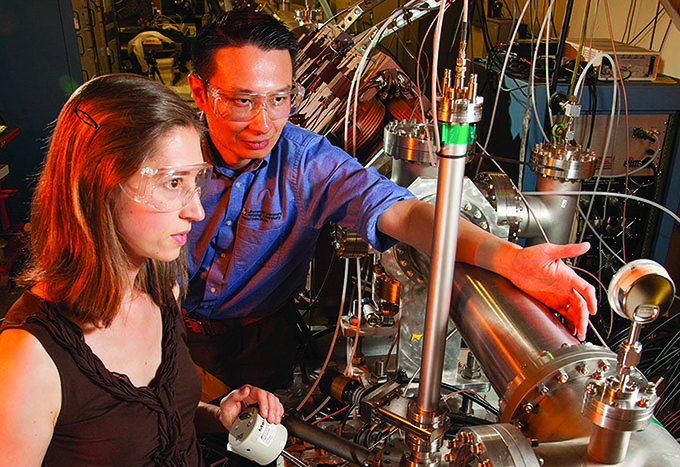
Fusion Sciences
Associate Division Leader: Harry Mclean
Covering a broad range of research activities, including magnetic fusion energy, discovery plasma science, high-energy-density laboratory plasmas, and fusion technology and materials, we are LLNL’s point of contact for Department of Energy (DOE) and national fusion programs, and we collaborate with all the major DOE magnetic fusion facilities.
Our scientists hold leadership roles in multi-institutional fusion research centers as well as in magnet design for the ITER tokamak. Other international efforts include experiments and modeling in support of fusion energy programs in Europe, China, and South Korea. We provide expertise and support for national security applications of electromagnetic modeling and pulsed-power driven fusion.
Learn more about our research groups by expanding the sections below.
Group leader: John Barnard (Acting)
Group leader: Tammy Ma
Group leader: Steve Allen
We compare experimental results with analytical theory and computational models of plasma behavior to develop novel diagnostic measurements and execute state-of-the-art MFE experiments focused on both the core and boundary of high-performance MFE plasmas. Our advanced diagnostics are relevant to one of the most ambitious energy projects in the world, ITER. We focus specifically on experiments conducted at the DIII-D National Fusion Facility at General Atomics.
Group leader: Alex Friedman
Our group undertakes basic and applied plasma science as well as plasma theory and computations in support of magnetic and inertial fusion experiments. Our researchers take advantage of advanced algorithm development and high-performance computing to simulate various kinetic and fluid plasma models.
Members of our group developed the BOUT++ framework for writing fluid plasma simulations in curvilinear geometry.
Group leader: Vlad Soukhanovskii
We compare experimental results with analytical theory and computational models of plasma behavior to develop novel diagnostic measurements and execute state-of-the-art MFE experiments focused on both the core and boundary of high-performance MFE plasmas. Our advanced diagnostics are relevant to one of the most ambitious energy projects in the world, ITER. We focus specifically on experiments conducted at the National Spherical Torus Experiment Upgrade (NSTX-U) at the Princeton Plasma Physics Laboratory.
Group leader: Andrea Schmidt
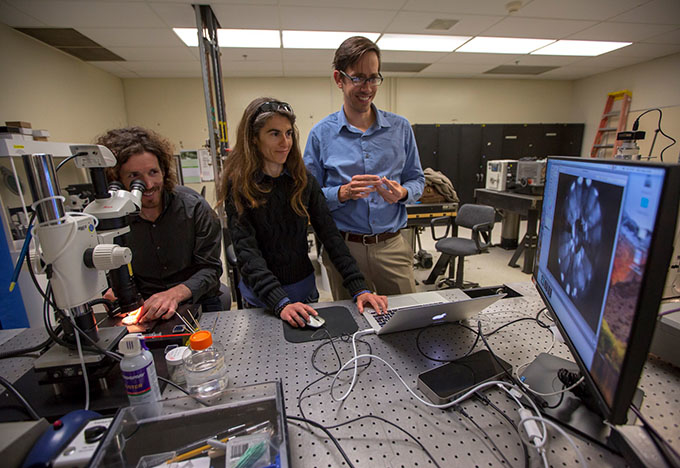
High-Energy-Density Science
Associate Division Leader: David Bradley
Our research in high-energy-density (HED) physics includes astrophysics, atomic physics, spectroscopy, radiation transport, planetary science, and advanced diagnostic development and supports major LLNL programs. Using dynamic compression techniques and advanced diagnostics, we explore the behavior of matter at high-atmosphere pressures and at high temperatures. We reproduce the physical states existing inside stars, planets, and nuclear weapons.
Ongoing work includes laser–plasma interactions, particle acceleration, harmonic generation, short-pulse laser physics, and magnetic fusion. We explore inertial confinement fusion and weapons physics at the National Ignition Facility. We carry out our HED science work at major national and international facilities, ranging from synchrotrons and free electron x-ray lasers to z-pinches and laser plasmas. We develop and apply theoretical and computational models to questions of atomic physics, statistical physics, radiation opacities, HED plasmas, laser–matter interactions, and transport.
To advance HED research, enhance interactions with the international research community, and provide venues for training new scientists, we operate two intermediate scale facilities: the Jupiter Laser Facility and the electron beam ion trap.
Learn more about our research groups by expanding the sections below.
Group leader: Dayne Fratanduono
Group leader: Yuan Ping
We develop and use dynamic compression techniques and advanced diagnostics to explore the behavior of matter at millions to billions of atmospheres pressures, conditions exceeding the atomic unit of pressure (~100 million atmospheres), and to reproduce states existing deep inside stars, sub-stellar objects, and planets. This fundamental research is giving a new understanding to core shell chemistry, the behavior of solids at high pressures, the evolution of planets, the potential for controlled thermonuclear plasmas, and a wide variety of national security applications.
Group leader: Marilyn Schneider
We study the radiation properties of plasmas. These properties range from the basic atomic physics of isolated ions to opacities and radiation flow in hot dense matter to electron-positron pair production. The plasmas are produced at laser facilities such as the National Ignition Facility, the Jupiter Laser Facility, and the electron beam ion trap.
Group leader: Steve Libby
Our focus is understanding and computing the microscopic physics of hot and warm dense plasmas, with typical applications to laser-produced plasmas, inertial fusion, stockpile stewardship, and astrophysics. To do this, we develop and apply cutting-edge theoretical and computational models in many electron relativistic and non-relativistic atomic physics, statistical physics, radiation opacities, and plasma equations of state and transport.
We use our computational models to produce the detailed opacities and plasma equations of state required for radiation-hydrodynamics simulations. In parallel, we also apply our computational techniques to collaborate on the design of experiments aimed at probing the physics of inertial fusion and other plasmas. Additionally, we study the physics of short-pulse, laser-driven high harmonics and the development of quantum coherent sensors for security applications.
Group leaders: Bernard Kozioziemski (imaging) and Sabrina Nagel (detection)
We develop and deploy advanced diagnostics and measurement techniques at the National Ignition Facility.
Career Opportunities
We’re always looking for talented scientists to join our team.
Everything we do supports LLNL missions in foundational science, defense technology, stockpile stewardship, nuclear threat reduction, and space science and security. If you’re interested in joining our team, browse our open positions or learn more about LLNL research pathways in physics.
Capabilities & Facilities
Our researchers utilize world-class scientific capabilities and modern high-performance computing facilities to support Laboratory programs. Listed below are LLNL’s state-of-the-art capabilities commonly used by our scientists.
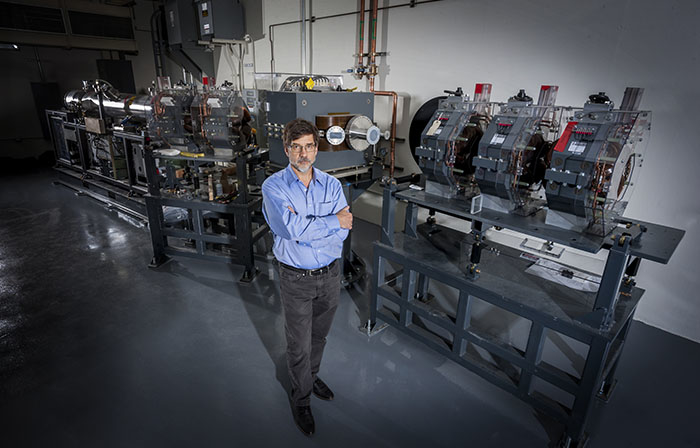
Accelerator Complex
Contact: Scott Anderson
LLNL’s accelerator complex houses sophisticated tools to accelerate charged particles to incredibly high speeds. Located three stories underground, these instruments allow our nuclear physicists to detect isotopes, create fast neutrons, peer inside heavily shielded objects, and characterize unknown material.
Additional information is available on the Accelerator Complex webpage.
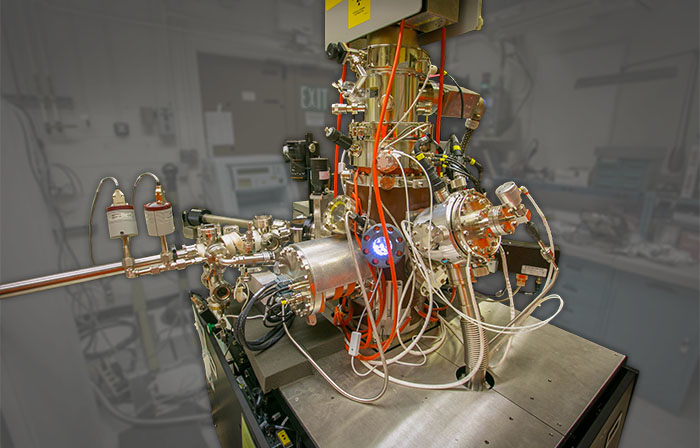
Actinide Materials
Contact: Scott McCall
We support global and national security missions by maintaining capabilities to synthesize, characterize, and test materials containing actinides.

Animal Care Facility (ACF)
Contact: acf [at] lists.llnl.gov (ACF support)
The Association for Assessment and Accreditation of Laboratory Animals, International (AAALAC)-accredited and Public Health Service (PHS) Assured animal facility houses several thousand small animals, which are cared for by full-time Laboratory animal technologists. Animal models are used in comparative genomics studies that focus on understanding gene regulation and for vaccine and countermeasure development.
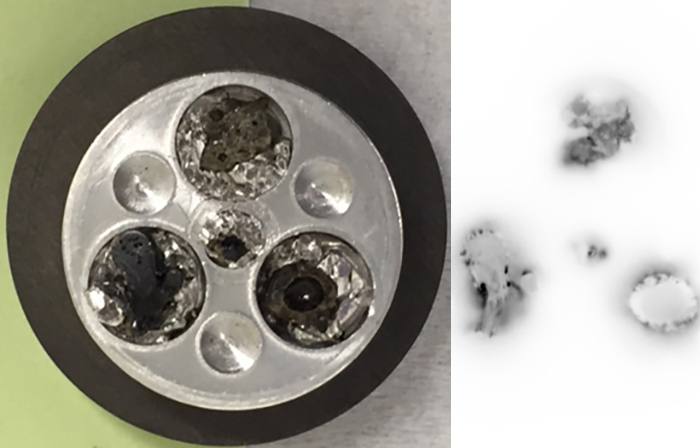
Autoradiography Imaging
Contact: Kim Knight
Sub-millimeter resolution alpha and beta radioactivity imaging
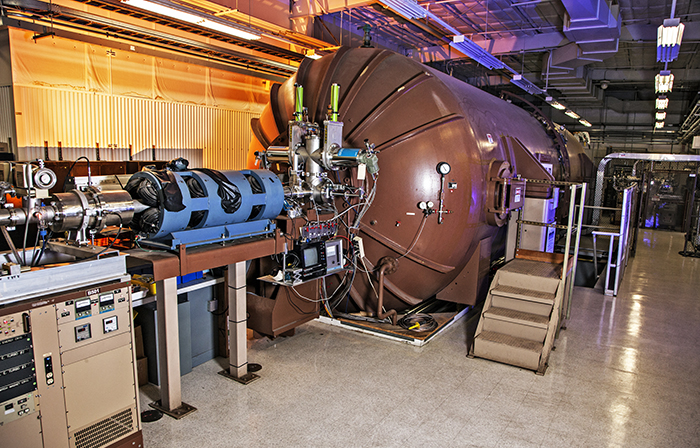
Center for Accelerator Mass Spectrometry (CAMS)
Contact: Nanette Sorensen or Scott Tumey
Researchers at CAMS use diverse analytical techniques and state-of-the-art instrumentation to develop and apply unique, ultra-sensitive isotope ratio measurement and ion beam analytical techniques.
Additional information is available on the CAMS website.
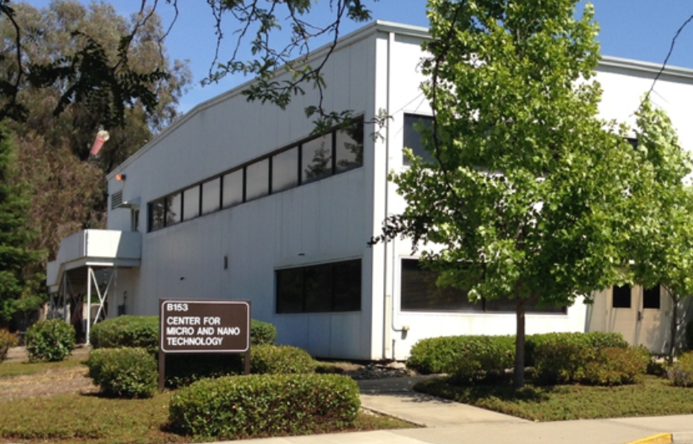
Center for Micro- and Nanotechnology (CMNT)
Contact: Engineering Directorate
Researchers at the CMNT invent, develop, and apply microscale and nanoscale technologies to support LLNL missions. The research and capabilities of the Center cover materials, devices, instruments, and systems that require microfabricated components, including microelectromechanical systems (MEMS), electronics, photonics, micro- and nanostructures, and micro- and nanoactuators.
Additional information is available on the Engineering website.
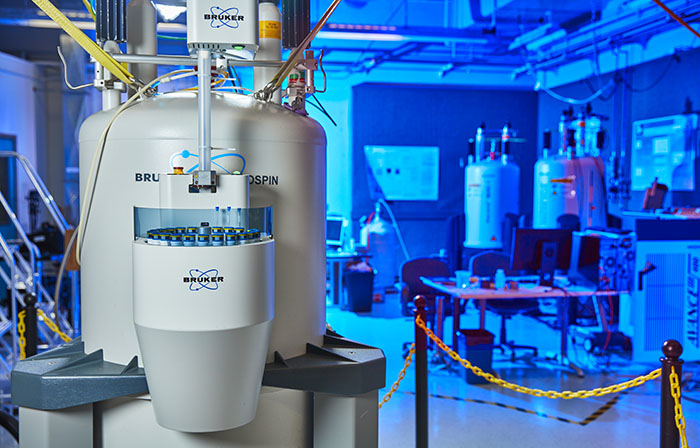
Center for National Security Applications of Nuclear Magnetic Resonance (NMR)
Contact: TBD
The NMR facility provides advanced characterization of chemical processes and materials using magnetically passed spectroscopic capabilities. The center houses multiple spectrometers used to analyze solids, liquids, and gases, including explosives, highly toxic industrial chemicals, and chemical and biological threat agents.

Computational Nuclear Physics
Contact: Bret Beck
We measure, collect, and evaluate nuclear data and incorporate these data into libraries to be used in simulations. We provide nuclear data, physics simulation, and data processing tools for experimental and theoretical nuclear data.
Additional information is available on the Computational Nuclear Physics website.
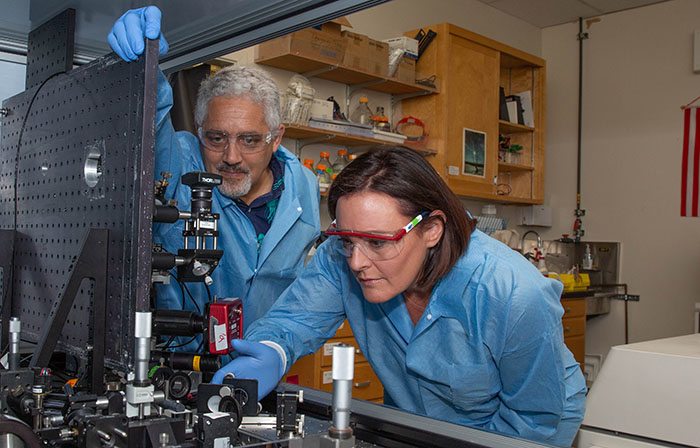
Cooperative Research Center for NanoScaffold-based Chlamydia trachomatis Vaccines
Contact: Matthew Coleman
Leading experts in immunology and nanotechnology are developing and testing a new type of vaccine to prevent sexually transmitted infections caused by the Chlamydia trachomatis (Ct) pathogen.
Additional information is available on the Cooperative Research Center for NanoScaffold-based Chlamydia trachomatis Vaccines webpage.
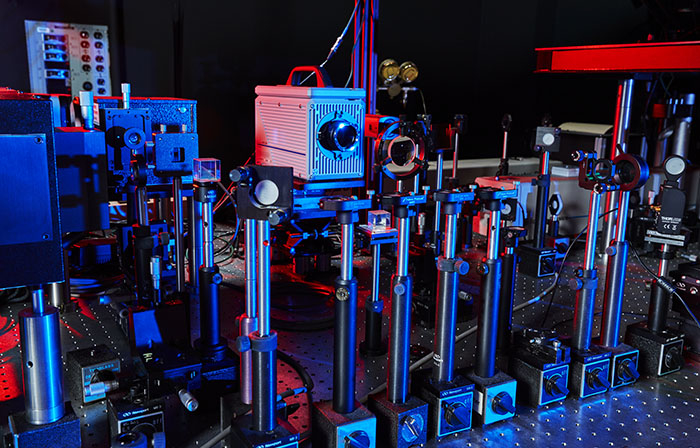
Diamond Anvil Cell (DAC) and Ultrafast Science
Contact: Geoffrey Campbell
Our diamond anvil-based laboratories can measure materials properties at static pressures above 1 Mbar, providing essential equation-of-state information for weapons, experiment design, and further study of the chemistries that control unique material formation. Additional experiments to study shock compression with 10 picosecond time resolution are pushing the limits of current theories of the metal strength, phase transitions, and chemical kinetics.
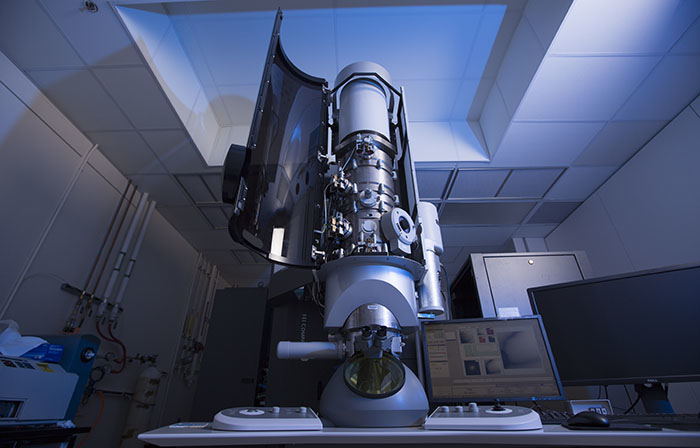
Dynamic Transmission Electron Microscope (DTEM)
Contact: Geoffrey Campbell
The LLNL-developed DTEM enables direct observation of unique mechanical properties controlled by features at the nanoscale.
Additional information is available on the DTEM webpage.
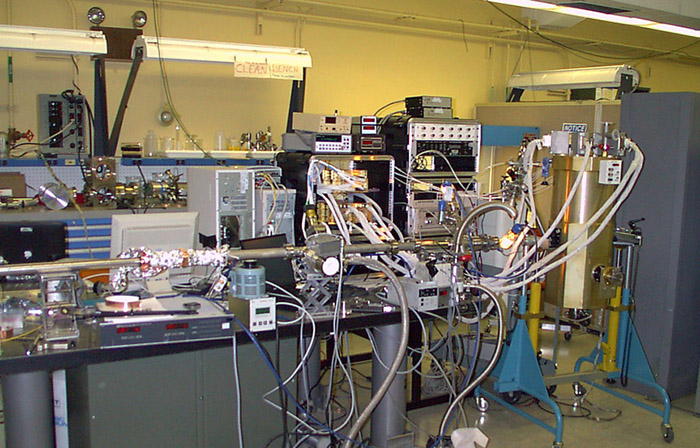
Electron Beam Ion Trap (EBIT)
Contact: Greg Brown
An EBIT makes and traps very highly charged ions by means of a high-current density electron beam. The ions can be observed in the trap itself or extracted from the trap for external experiments. Our EBIT is the only ion source in the world that can create highly charged ions that are practically at rest, allowing us to study an otherwise inaccessible domain.
Additional information is available on the EBIT website.
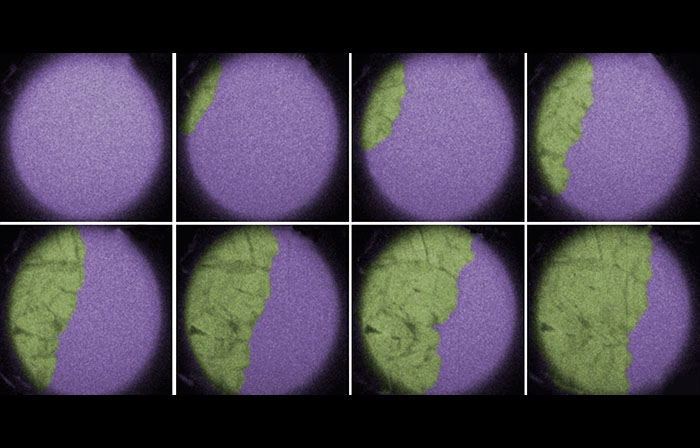
Electron Microscopy
Contact: Kerri Blobaum
LLNL maintains state-of-the-art capabilities in scanning electron microscopy (SEM) and transmission electron microscopy (TEM) to characterize materials.
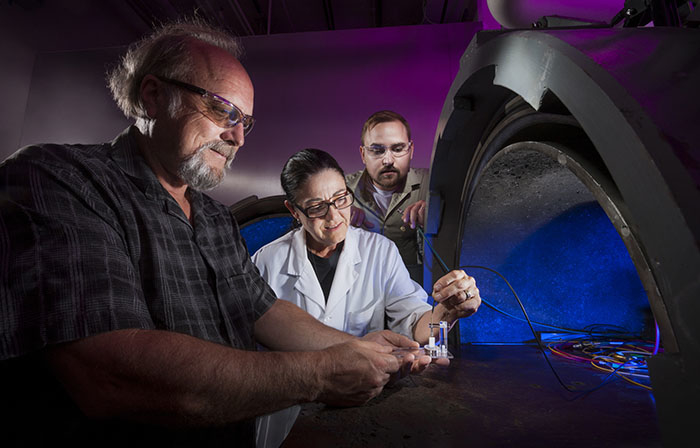
Energetic Materials Center (EMC)
Contact: Lara Leininger
The EMC supports research and development for advanced conventional weapons, rocket and gun propellants, homeland security, demilitarization, and industrial applications of energetic materials. Our researchers, as part of the EMC, specialize in the modeling and experimentation surrounding the development, characterization, and effectiveness of high explosives.
Additional information is available on the EMC website.
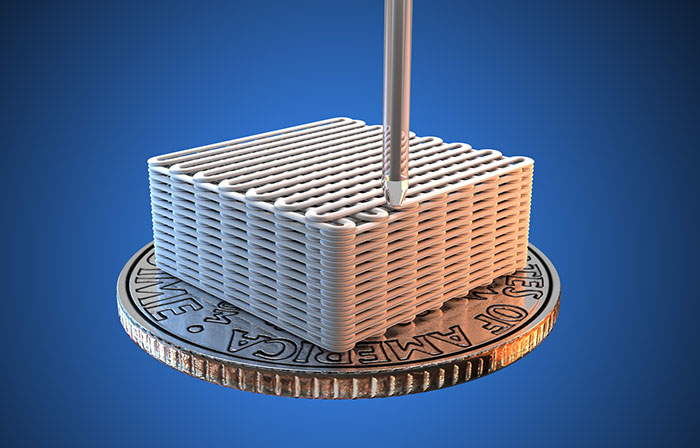
Feedstocks for Additive Manufacturing
Contact: Yong Han
Our scientists and engineers optimize additive manufacturing (3D printing) techniques, such as direct-ink writing, through focused investments in feedstock development. Using computer programs to simulate particle size and scale, we develop new feedstock materials from combinations of polymers, composites, and ceramics, with applications ranging from weapon components to energy innovations.
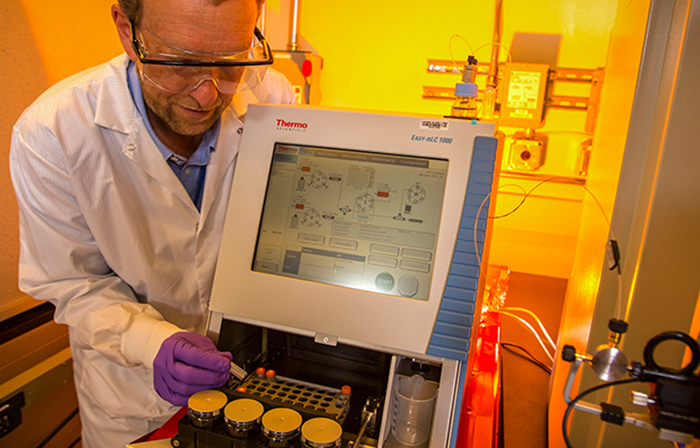
Forensic Science Center (FSC)
Contact: Audrey Williams
FSC researchers analyze interdicted samples, provide radiological assistance 24/7, and engage in the critical research and development needs of the intelligence community. FSC expertise includes analytical chemistry, organic chemistry, inorganic chemistry, nuclear chemistry, and forensic instrument design and fabrication.
Additional information is available in the FSC Fact Sheet and on the FSC website.
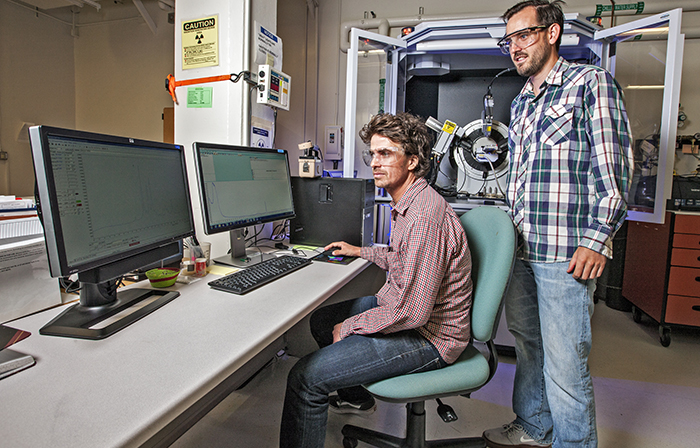
Glenn T. Seaborg Institute
Contact: Mavrik Zavarin
The LLNL branch of the Glenn T. Seaborg Institute conducts collaborative research between LLNL and the academic community in radiochemistry and nuclear forensics, contributing to the education and training of undergraduate and graduate students, postdocs, and faculty in transactinium science.
Additional information is available on the Seaborg Institute website.
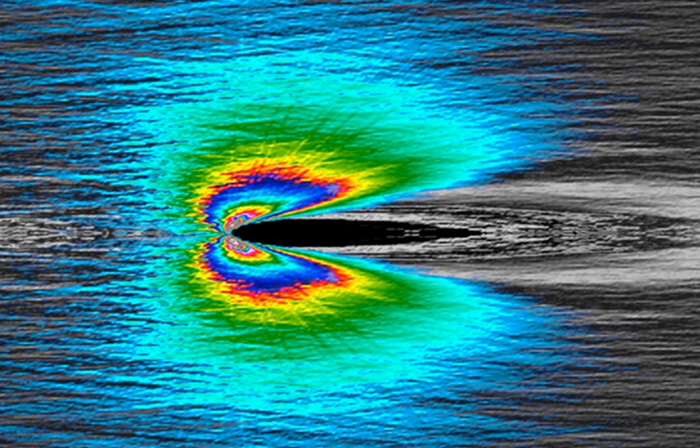
High Energy Density Science (HEDS) Center
Contact: Frank Graziani
The HEDS Center fosters collaborations with university faculty and students that have the potential to enhance high-energy-density science research. The HEDS Center facilitates access to LLNL’s HEDS experimental facilities and high-performance computing resources in order to support research important to the Department of Energy.
Additional information is available on the HEDS Center website.
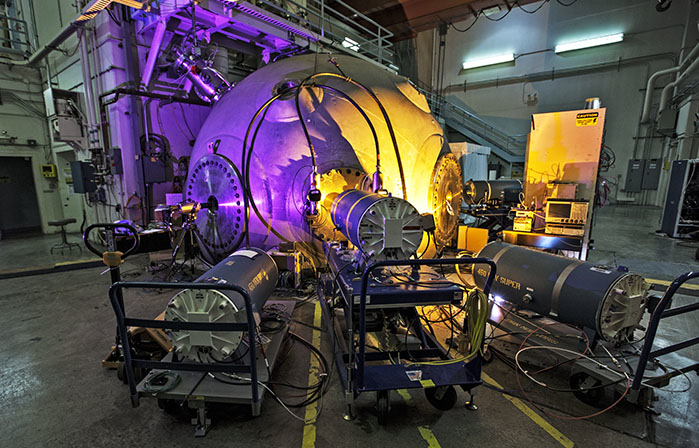
High Explosives Applications Facility (HEAF)
Contact: Lara Leininger
HEAF houses unique facilities for the synthesis, characterization, and testing of high explosives and other energetic materials. HEAF is also equipped with extensive, high-fidelity, high-speed diagnostic capabilities, including x-ray radiography, high-speed photography, laser velocimetry, and embedded particle velocity/pressure measurements.
Additional information is available on the HEAF webpage.
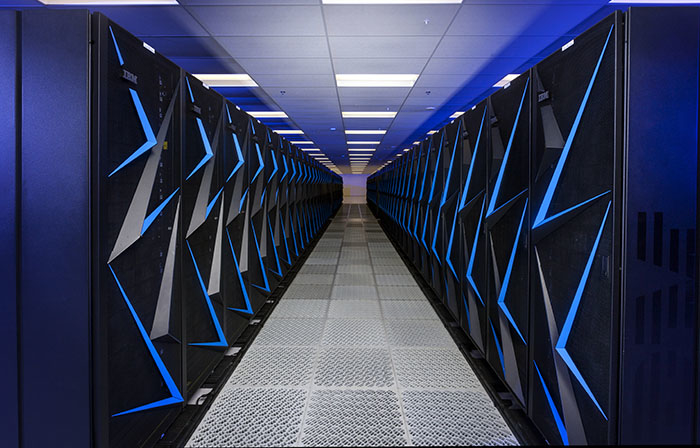
High-Performance Computing
Contact: lc-support [at] llnl.gov (LC support)
LLNL is home to a first-class computational infrastructure that supports the high-performance computing requirements of the Laboratory’s mission and research scientists. Livermore Computing provides the systems, tools, and expertise needed to enable discovery and innovation through simulations.
Additional information is available on the Livermore Computing Center website.
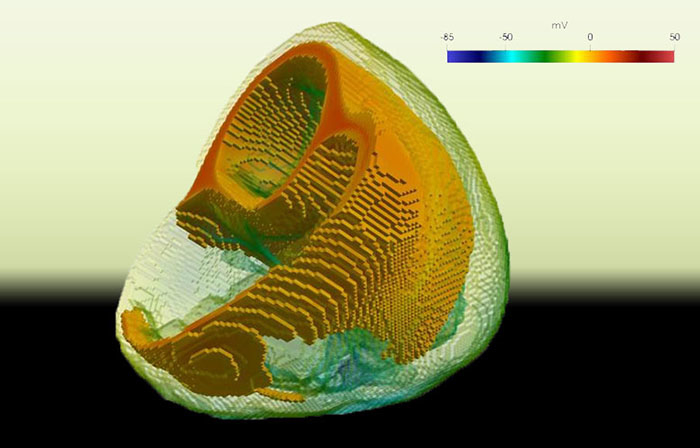
High-Performance Computing (HPC) Innovation Center
Contact: HPC Innovation Center
LLNL’s HPC Innovation Center connects companies with computational science and computer science experts, on demand, to help them solve their toughest challenges. It also provides cost-effective access to some of the world’s largest HPC systems and rapidly assembles expert teams to develop, prove, and deploy high-impact solutions across a broad range of industries and applications.
Additional information is available on the HPC Innovation Center website.

Joint Genome Institute (JGI)
Contact: Crystal Jaing
The JGI is a high-throughput genome sequencing and analysis facility dedicated to the genomics of nonmedical microbes, microbial communities, plants, fungi, and other targets relevant to DOE mission areas in clean energy generation, climate change, and environmental sciences. Scientists from the Genomics group support key missions of JGI by performing DNA sequencing experiments and sequencing data analysis utilizing unique molecular biology skills and state-of-the-art instrumentation.
Additional information is available on the JGI website.
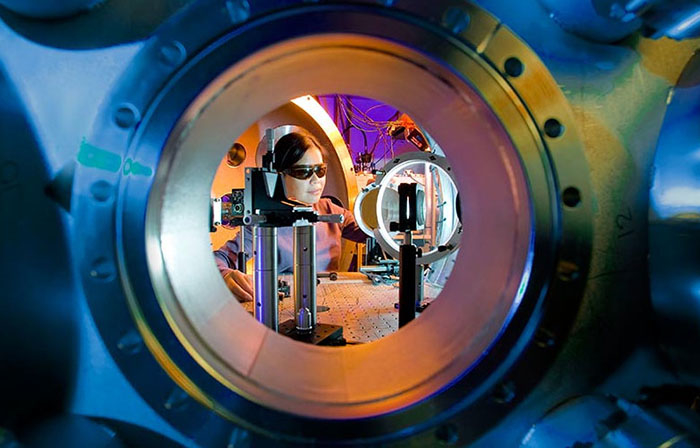
Jupiter Laser Facility (JLF)
Contact: Elaine Johnson
JLF is a unique laser user facility for research in high-energy-density science. Its diverse laser platforms offer researchers a wide range of capabilities to produce and explore states of matter under extreme conditions of high density, pressure, and temperature.
Additional information is available on the JLF website.
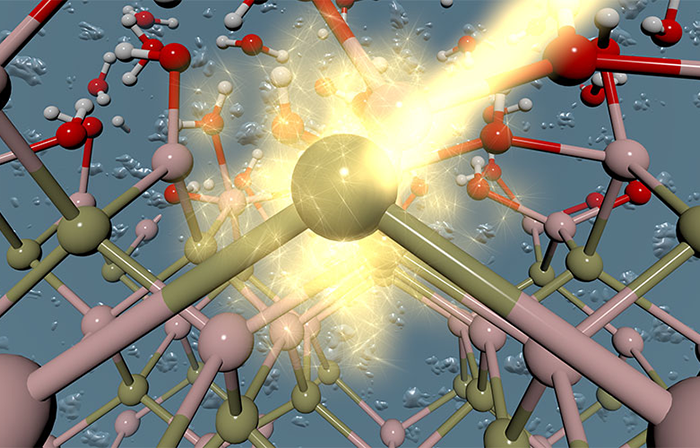
Laboratory for Energy Applications for the Future (LEAF)
Contact: Brandon Wood
LEAF is a multidisciplinary center that develops disruptive technologies for the grid, transportation, and the environment from inception to demonstration.
Additional information is available on the LEAF website.

Mass Spectrometry
Contact: Rachel Lindvall
LLNL’s mass spectrometry instruments offer experimental and diagnostic techniques that make it possible to count atoms, study lunar rocks, isolate isotopes, and characterize unknown material. These sophisticated tools enable our nuclear chemists, cosmochemists, and radiochemists to tackle complex science challenges.
Additional information is available on the Mass Spectrometry webpage.
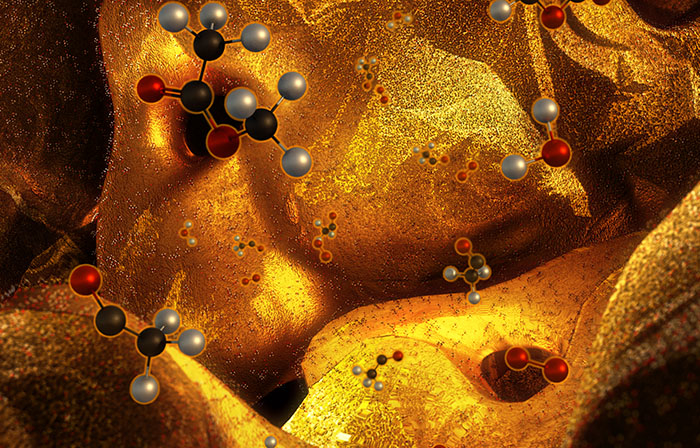
Nanoscale Synthesis and Characterization Laboratory (NSCL)
Contact: Alex Hamza
NSCL is making advances in science at the intersection of physics, materials science, engineering, and chemistry. We are pursuing research in nanoporous materials, advanced nano crystalline materials, novel 3D nanofabrication technologies, and nondestructive characterization at the mesoscale.
Additional information is available on the NSCL webpage.
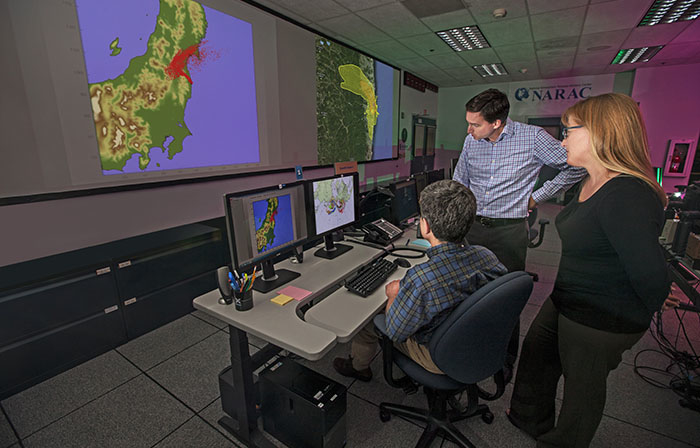
National Atmospheric Release Advisory Center (NARAC)
Contact: Lee Glascoe
NARAC is a national support and resource center for planning, real-time assessment, emergency response, and detailed studies of atmospheric releases of nuclear, radiological, chemical, biological, and natural materials. NARAC provides timely and accurate atmospheric plume predictions to aid emergency preparedness and response efforts in protecting the public and the environment.
Additional information is available on the NARAC website.
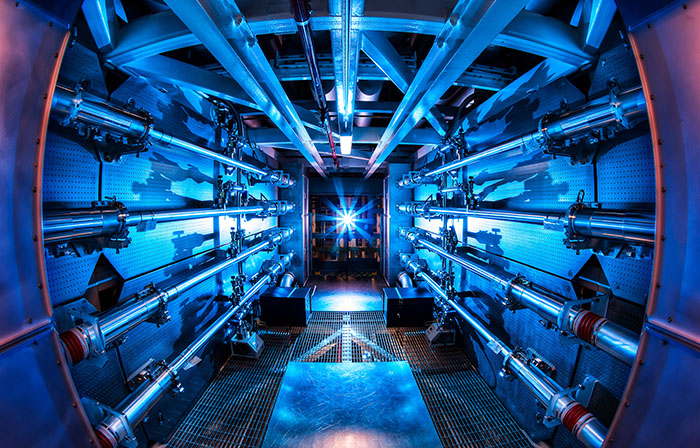
National Ignition Facility (NIF)
Contact: Patricia Koning
NIF houses the world’s largest and highest-energy laser. NIF’s laser beams routinely create temperatures and pressures similar to those that exist only in the cores of stars and giant planets and inside nuclear weapons. The facilities are a key element of maintaining the reliability and safety of the U.S. nuclear deterrent without full-scale testing.
Additional information is available on the NIF website.
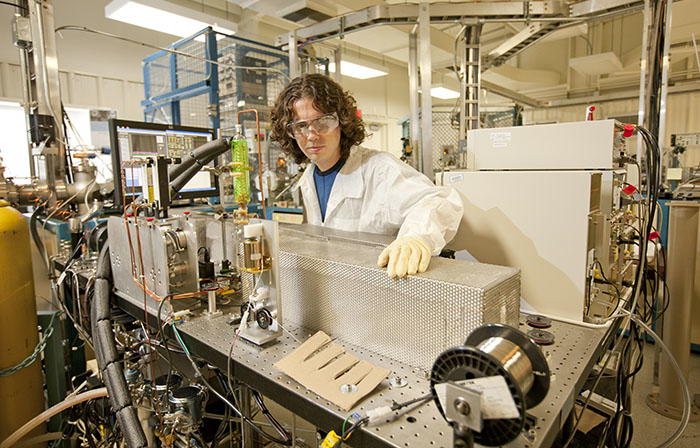
National User Resource for Biological Accelerator Mass Spectrometry (BioAMS)
Contact: Graham Bench
BioAMS makes accelerator mass spectrometry (AMS) available to biomedical researchers who need to accurately measure very low levels of radioisotopes. BioAMS is working to enhance AMS for analysis of radioisotopes in biomedical tracer studies through development of new methods and instrumentation.
Additional information is available on the BioAMS website.
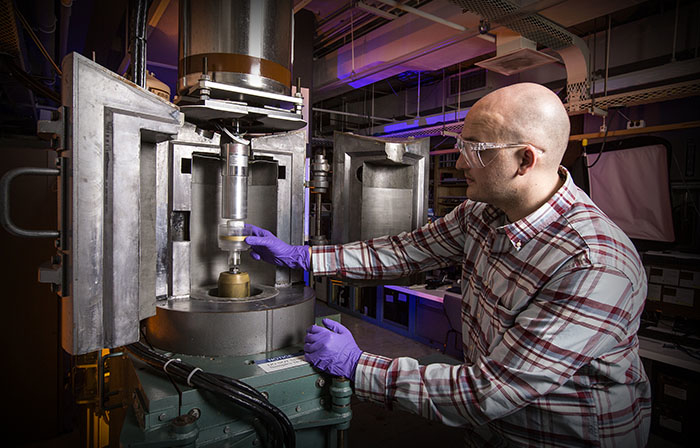
Nuclear Counting Facility (NCF)
Contact: Keenan Thomas
Located two floors below ground, with a layer of shielding materials between floors to minimize background radiation, LLNL’s Nuclear Counting Facility provides high-sensitivity radiation measurements. Its assets include gamma spectrometers, solid-state detectors, alpha and beta counting systems employing ionization gas chambers, and liquid scintillation techniques.
The facility supports research in stockpile stewardship, nonproliferation, and counterterrorism, including:
- Analyzing samples and surrogate materials in support of nuclear forensics efforts.
- Studying samples collected during underground nuclear tests, which ended in 1992.
- Determining the number of radioactive atoms produced during experiments at LLNL’s National Ignition Facility.
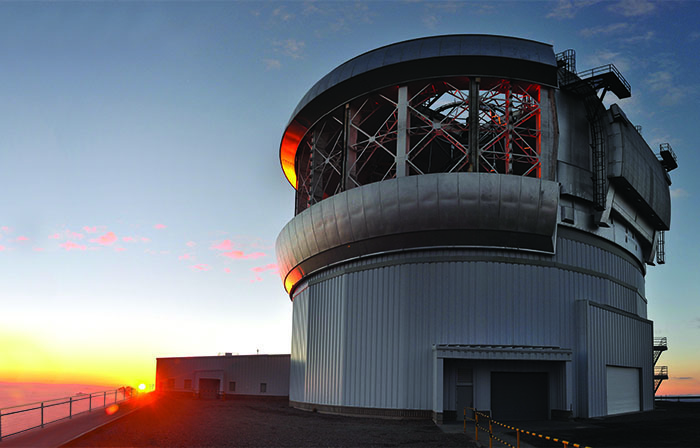
Optical Sciences
Contact: Alex Pertica
Our experts develop x-ray adaptive optics systems and optical payloads for nano-satellites. We have explored the use of survey telescopes for dark matter research, developed algorithms and software tools for simulation of orbital space events, and implemented sensor calibration and exploitation strategies for hyperspectral airborne sensors.
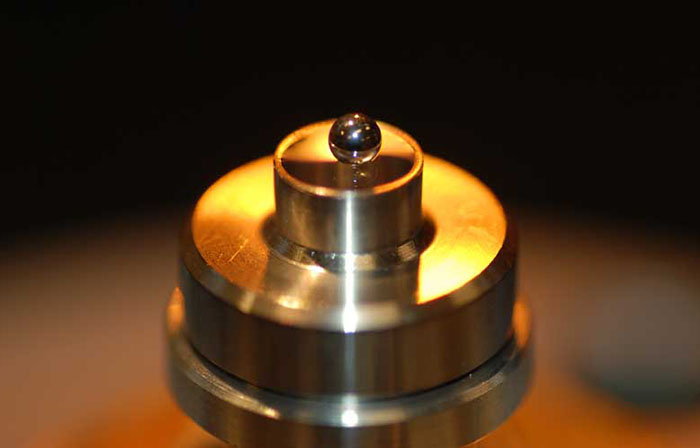
Polymer Science
Contact: James Lewicki
We maintain capabilities to synthesize, characterize, and model a broad range of polymeric materials and architectures.

